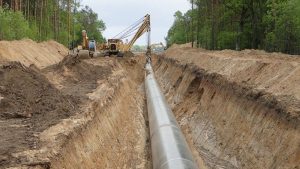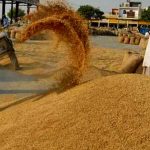
Nepal’s Economic Surge: Positive Growth in Key Indicators

In a recent release by the Nepal Rastra Bank (NRB) on January 11, the economic landscape of Nepal has shown remarkable resilience and positive growth during the first five months of the current fiscal year. The central bank’s report highlights a decrease in inflation, robust remittance inflows, and an increase in foreign reserves. This comprehensive overview delves into the various economic indicators that contribute to Nepal’s positive performance.
Inflation and Consumer Prices: One of the standout achievements is the moderation of year-on-year consumer price inflation to 4.95% in mid-December 2023. This marks a significant reduction from the 7.38% recorded a year ago, showcasing the effectiveness of economic policies in curbing inflationary pressures.
Merchandise Imports: The review period witnessed a noteworthy shift in merchandise imports, which decreased by 3.4% to Rs 642.21 billion. Import statistics by destination revealed a decrease in imports from India by 1.3% and other countries by 28.4%. In contrast, imports from China increased substantially by 32.8%. The report outlined specific sectors experiencing growth, such as readymade garments, MS wire rods, bars, and coils, electrical equipment, textiles, and aircraft spare parts. Conversely, imports of gold, crude soybean oil, crude palm oil, petroleum products, rice/paddy, among others, showed a decline.
Trade Deficit and Export-Import Ratio: The total trade deficit reduced by 3.1% to Rs 579 billion during the review period, compared to an 18.8% decrease in the corresponding period of the previous year. The export-import ratio saw a decrease from 10.1% to 9.8% during the review period, indicating a more balanced trade scenario.
Remittance Inflows: A key driver of Nepal’s economic resilience is the robust growth in remittance inflows, recording a substantial increase of 27.6% to Rs 613.25 billion. This surpasses the 23.0% growth recorded in the same period of the previous year, highlighting the significance of remittances in supporting the nation’s economy.
Balance of Payment and Foreign Exchange Reserves: The balance of payment remained at a surplus of Rs 210.59 billion in the first five months of the current fiscal year, a significant improvement from the surplus of Rs 45.87 billion in the same period of the previous year. The gross foreign exchange reserves increased by 14.8% to Rs 1767.04 billion in mid-December 2023, reflecting a robust economic position. Notably, NRB’s reserves increased by 15.6% to Rs 1556.25 billion in mid-December 2023 from Rs 1345.78 billion in mid-July 2023.
Conclusion: In conclusion, Nepal’s economic performance in the first five months of the current fiscal year paints a positive picture. The concerted efforts to control inflation, diversify trade partners, and encourage remittance inflows have contributed to a more resilient and balanced economic landscape. As the nation navigates the complexities of a global economy, these indicators offer hope for continued growth and stability. The Nepal Rastra Bank’s report serves as a testament to the effectiveness of strategic economic measures in steering the country towards prosperity.












Comments